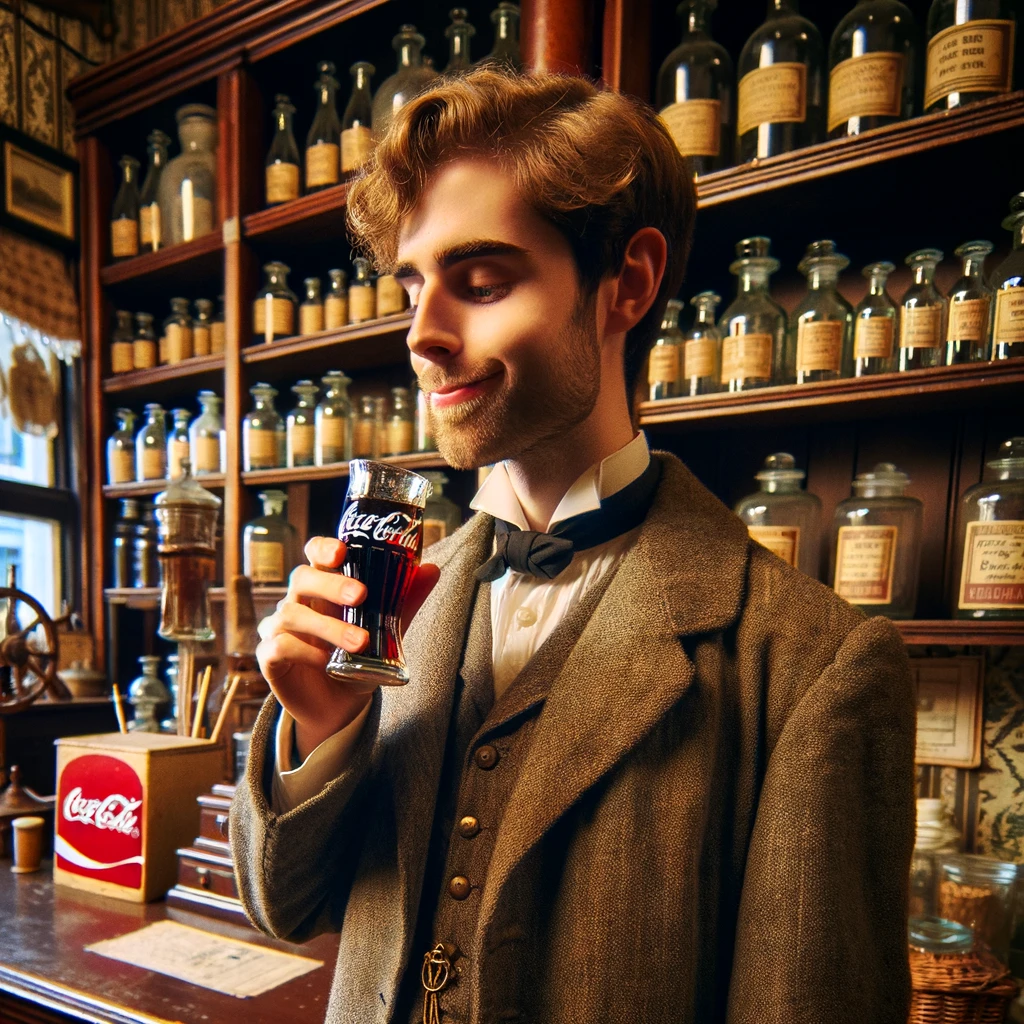Introduction
Coca-Cola’s story is a testament to the transformative power of strategic product sampling in building a brand. From its humble beginnings in a small Atlanta pharmacy, Coca-Cola leveraged the art of giving away free samples to evolve into a global behemoth, creating an indelible mark on the beverage industry. This article explores how Coca-Cola’s innovative sampling strategies over the decades played a crucial role in its journey to becoming one of the world’s most recognized brands.
The Early Days of Coca-Cola
- Origins: The story of Coca-Cola began in 1886 when Dr. John S. Pemberton, a pharmacist, concocted a caramel-colored syrup in Atlanta, Georgia. Seeking to create a distinctive beverage, Pemberton combined the syrup with carbonated water to craft a delightful and unique soft drink.
- Initial Marketing: Pemberton employed a simple yet effective marketing strategy. He distributed complimentary tickets for a free glass of Coca-Cola, encouraging people to try his new creation. These free samples were initially offered at Jacob’s Pharmacy in Atlanta, where the drink gained its first fans. This approach not only created initial buzz but also allowed Pemberton to gather valuable customer feedback.
Strategic Sampling in the 20th Century
- Widespread Distribution: As Coca-Cola’s popularity grew, the company expanded its sampling strategy. Free samples were distributed nationwide at soda fountains, which were social hubs at the time. This widespread distribution helped Coca-Cola gain a foothold in various American communities, ingraining itself into the fabric of society.
- World War II Effort: Coca-Cola’s most significant expansion came during World War II. The company took a patriotic stance, pledging to provide every American soldier a bottle of Coke for 5 cents, irrespective of the cost to the company. This decision was not just a demonstration of support for the troops but also a masterstroke in global marketing. Soldiers across the world were introduced to Coke, seeding a global market for the brand post-war.
Sampling as a Marketing Tool
- Creating a Taste for Coke: The heart of Coca-Cola’s sampling strategy lay in its confidence in the product. The company believed that once people tasted Coke, they would be converted to regular customers. Free samples served as the perfect vehicle to introduce the unique taste of Coca-Cola to a broader audience.
- Establishing Brand Recognition: Consistent sampling efforts were instrumental in transforming Coca-Cola from a mere soft drink to a symbol of refreshment and enjoyment. This widespread sampling established Coca-Cola as a household name, with its distinct flavor becoming a part of people’s lives.
Expanding Global Reach through Sampling
- International Events: Coca-Cola astutely used international events to expand its reach. The company sponsored major events like the Olympic Games and the FIFA World Cup, offering free samples to millions of attendees. This not only introduced Coca-Cola to a global audience but also associated the brand with moments of joy and celebration.
- New Product Introductions: Coca-Cola has consistently used sampling to introduce new products. When launching variants like Diet Coke and Cherry Coke, free samples were distributed to entice consumers and gauge their reactions, helping the company to refine its offerings and marketing strategies.
Innovations in Sampling
- Modern Sampling Campaigns: With the digital age, Coca-Cola’s sampling strategies have evolved. The company has embraced innovative techniques such as interactive vending machines, which dispense free Coke in exchange for a social media interaction, and online giveaways, leveraging the power of digital platforms to reach a broader audience.
- Sustainability in Sampling: In recent years, Coca-Cola has shifted towards more sustainable practices in its sampling campaigns. This involves using environmentally friendly materials and methods, aligning the brand with the growing global consciousness about environmental sustainability.
Impact of Sampling on Coca-Cola’s Brand Loyalty
- Creating Emotional Connections: Coca-Cola’s sampling campaigns have always focused on creating emotional connections with consumers. By being part of memorable moments and personal experiences, the brand has fostered deep loyalty among its customer base.
- Community Engagement: Through its sampling campaigns, Coca-Cola has engaged with communities worldwide, enhancing its image not just as a beverage company but as a brand that plays an active role in people’s lives.
Conclusion
The journey of Coca-Cola from a local drink to an international icon underscores the effectiveness of sampling as a marketing strategy. By offering a taste of its product to the world, Coca-Cola managed to turn a simple beverage into a symbol of refreshment and joy. The company’s innovative approach to sampling not only increased product awareness and consumption but also helped forge an emotional connection with consumers across the globe.
Final Thoughts
Coca-Cola’s story is a blueprint for businesses aiming to make a significant impact in their markets. It highlights how a well-executed sampling strategy can create enduring brand loyalty and a lasting legacy in the competitive world of consumer goods.


